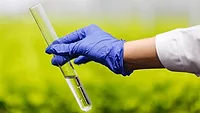One Health Campylobacter Risk Model Could Improve Outbreak Surveillance

Credit: cottonbro studio (cottonbro) via Pexels
Researchers have built a new risk model for possible human Campylobacter outbreaks that leverages data on weather patterns and the presence of Campylobacter on broiler farms. The developers of the model hope to disseminate the information it produces through a website that can generate warnings when appropriate.
The model follows a “One Health” approach, in that data from the animal, human, and environmental sectors were combined to predict human gastrointestinal illness (GI) outbreaks.
In Norway, where the study was conducted, there have been over 35,000 samples from humans positive for Campylobacter since 2004, including at least six outbreaks with 3–2000 cases of Campylobacter infection. Farmed chicken broilers are a source of human Campylobacter infection, and it is suggested that the outdoor environment is a major source of Campylobacter among broiler flocks.
The researchers observed the number and proportion of Campylobacter-positive broiler flocks as a proxy of increased Campylobacter in the environment, combined with weather data, to explore the potential of such information in foreseeing future outbreaks. Visualizations of predictions derived from the model could be shared in real time through Norway’s closed, interactive website, Sykdomspulsen for kommunehelsetjenesten (the One Health Sykdomspulsen website), which is similar to the U.S. Centers for Disease Control and Prevention’s Foodborne Diseases Active Surveillance Network (CDC’s FoodNet).
The study analyzed the presence of Campylobacter on broiler farms from July 26, 2010–March 14, 2022, on a weekly basis, across 356 municipalities. The presence of Campylobacter was compared with data on environmental temperature and precipitation, as well as reported doctor’s visits with concerns of GI illness. The data was represented by spatio-temporal models.
The new outbreak model revealed statistically significant relationships that support the hypothesis that weather patterns and Campylobacter sampled on municipality broiler farms (used as a proxy for increased environmental contamination) are associated with modest increases in GI illness consultations in Norwegian municipalities. Additionally, the researchers found simultaneous space-time clustering of Campylobacter infection in both broilers and humans, despite broiler meat being distributed nationwide. The finding could indicate that broiler meat is not the only source of human infection in the country, and that there are other common sources of contamination for Campylobacter-positive broiler flocks and human campylobacteriosis cases, such as water in the environment.
The model points to several ways in which the surveillance system could be improved to better understand the interaction of Campylobacter, the environment, weather, and human health, and can serve as a tool to communicate such insights to health professionals. The One Health Sykdomspulsen website, which is based on a collaboration between public health, animal health, and food safety authorities, could be leveraged to disseminate important predictions and insights of the model to critical public health professionals.
The aim of the modeling project was to improve One Health surveillance in Norway and across the EU, as the researchers believe that communication of model insights to health professionals through a website is the last link in the development of a surveillance system with practical use to society at large.
Looking for quick answers on food safety topics?
Try Ask FSM, our new smart AI search tool.
Ask FSM →









.webp?t=1721343192)